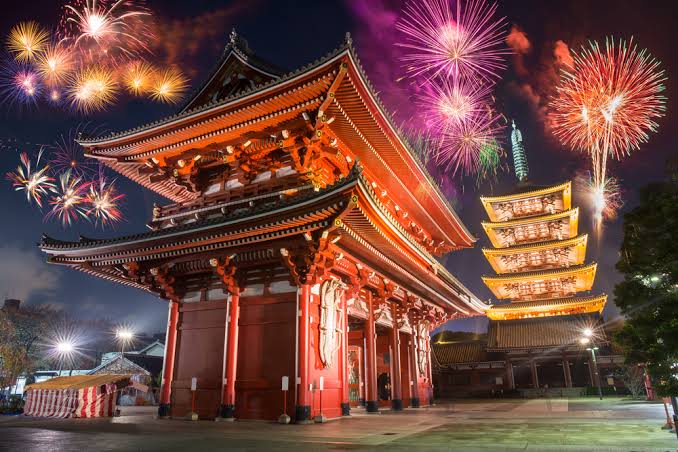Celebrating the New Year Holidays in Japan

When it comes to ringing in the New Year, Japan has its unique customs and traditions that create an atmosphere of celebration, reflection, and renewal. As December draws to a close, Japan transforms into a realm of festivity and rituals. Here, we delve into the customs associated with New Year in Japan and also answer a frequently asked question: Does Japan celebrate the Lunar New Year?
1. Oshōgatsu (お正月) – New Year’s Day
Oshōgatsu is the most significant holiday in Japan, marking the beginning of the New Year. While it technically refers to January 1st, the celebration often lasts until the 3rd, making it a time for family, rest, and traditions.
2. Hatsumōde (初詣) – The First Shrine Visit
One of the most cherished traditions is Hatsumōde, the first shrine or temple visit of the year. People queue in long lines to make wishes, buy charms, and express gratitude for the year past.
3. Kadomatsu (門松) – Bamboo and Pine Decorations
You’ll notice bamboo and pine decorations called Kadomatsu outside homes and businesses. These are considered to be temporary residences for ancestral spirits, symbolizing longevity, prosperity, and purity.
4. Otoshidama (お年玉) – Gift-giving
Children eagerly await Otoshidama, where they receive small envelopes containing money from their elders. The tradition is a gesture to wish them good health and success in the coming year.
5. Osechi Ryōri (お節料理) – Traditional New Year Food
The New Year is incomplete without the delightful Osechi Ryōri, a collection of dishes each carrying a symbolic meaning, such as prawns for long life or sweet black beans for health.
Does Japan Celebrate Lunar New Year?
A common query arises during this time about whether Japan celebrates the Lunar New Year. Historically, Japan followed the lunar calendar, similar to its neighbors like China and Korea. However, after the Meiji Restoration in 1873, Japan adopted the Gregorian calendar. Since then, the Lunar New Year is no longer a national holiday, and the customs associated with it have faded.
However, it’s worth noting that some regions and certain communities, especially those with ties to China and Korea, might still observe the Lunar New Year. If you’re interested in delving deeper into this topic, check out this comprehensive article: https://www.jluggage.com/blog/japan/does-japan-celebrate-lunar-new-year/
Nengajō (年賀状) – New Year Greeting Cards
Another heartwarming tradition that resonates deeply with the Japanese people is the practice of sending Nengajō or New Year greeting cards. Much like the western Christmas cards, Nengajō are sent to friends and family to convey New Year wishes, express gratitude for the past year’s kindness, and sometimes even to reconnect with distant acquaintances. These cards are specially designed, often featuring the zodiac animal of the upcoming year, and are typically delivered precisely on January 1st, thanks to the diligent efforts of the Japanese postal system. Sending and receiving Nengajō adds a personal touch to the festivities, emphasizing relationships and the spirit of togetherness that defines the New Year in Japan.
In Conclusion
Japan’s New Year’s customs showcase the nation’s dedication to tradition, family, and a hopeful start. As you participate or observe these traditions, you’re not just ringing in a new year but also experiencing centuries-old customs that beautifully blend the spiritual with the celebratory. Whether you’re enjoying Osechi Ryōri or making that special wish during Hatsumōde, you’re becoming a part of Japan’s rich tapestry of New Year celebrations.



